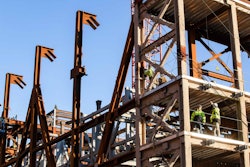
Not only is construction a strenuous job with the potential of physical injuries, the work presents many challenges to mental health, as well.
“Construction workers cope with unique causes of stress, such as uncertain seasonal work; remote work and job travel that keeps workers away from home and support systems; long, hard days and completion schedules; and the job-related risks of serious injuries,” explained Assistant Secretary for Occupational Safety and Health Doug Parker. “Left unchecked, these stressors can affect mental health severely and lead to anxiety, depression, substance abuse and – in some cases – suicide.”
To raise awareness of these risks, the Occupational Safety and Health Administration (OSHA) and other groups is encouraging industry employers to share and discuss available resources with their workers.
Coinciding with Construction Suicide Prevention Week, the task force is calling on construction industry employers, trade groups and other stakeholders to join OSHA’s Suicide Prevention Safety Stand-Down, Sept. 5-9, 2022. This week-long event seeks to raise awareness of unique mental health challenges construction workers face by asking employers to pause work for a moment to share information and resources and urge employees to seek help if needed.
The coronavirus outbreak and pandemic only worsened the problem, researchers found. In August 2020, the Centers for Disease Control and Prevention (CDC) reported a considerable one-year increase in symptoms of anxiety disorder and depressive disorder in a survey of the U.S. population.
Moved by their concern for a growing problem, a group of industry volunteers joined in 2020 to launch the first Suicide Prevention Week for construction workers. In 2021, more than 68,000 workers in 43 states registered to participate in Construction Suicide Prevention Week, managed by a task force comprised of OSHA, Associated General Contractors, The Builders Association, construction companies and labor unions.
“Suicide can be prevented with professional help and assistance,” Parker said. “OSHA encourages employers, industry associations, labor organizations and workers to use all available resources to understand the problem and the warning signs of depression before tragedy strikes.”
The 988 Suicide & Crisis Lifeline is a federally-funded project designed to improve crisis services and advance suicide prevention for U.S. residents. Supported by the U.S. Department of Health and Human Services, the 988 Suicide & Crisis Lifeline, formerly the National Suicide Prevention Lifeline, provides free and confidential emotional support to people in suicidal crisis or emotional distress. Available 24 hours a day, 7 days a week, the 998 lifeline is a national network of more than 200 local crisis centers, combining custom local care and resources with national standards and best practices.
The CDC reports that the suicide rate for men in construction and extraction was five times greater than the rate of all other work-related fatalities in the industry in 2018, and these workers are four times more likely to end their own lives than people in the general population.
Mental health and crisis resources can be found here.




















